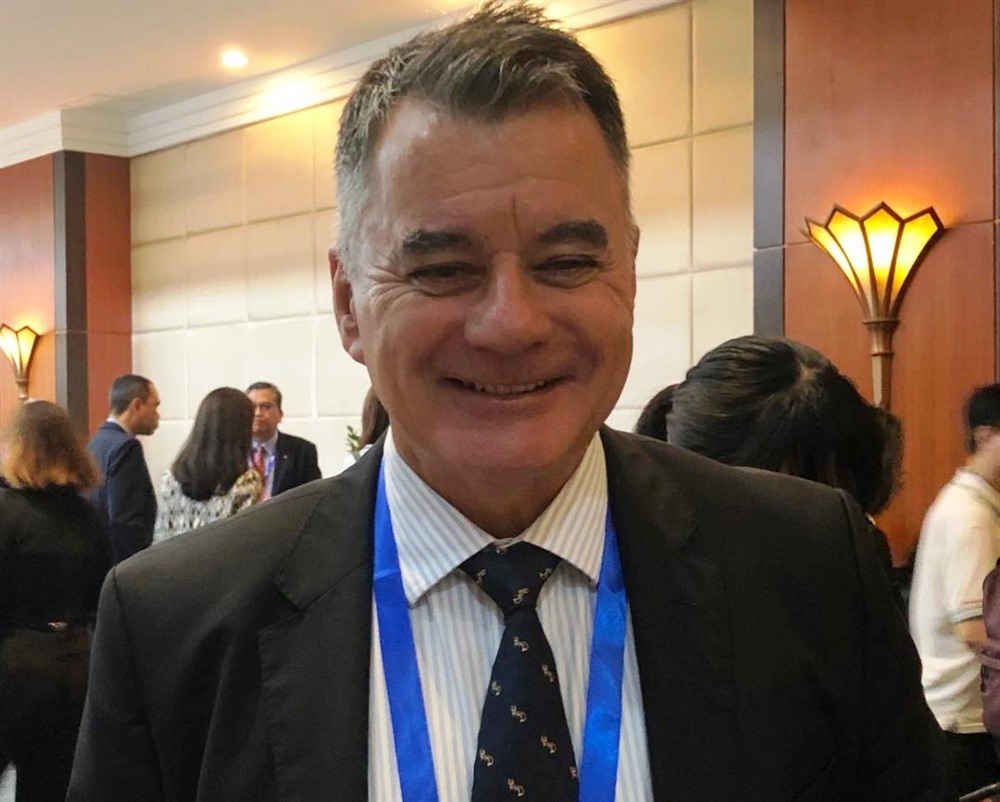 Society
Society

Việt Nam News reporter Lê Hương interviews Tony Gillies, editor in chief of Australian Associated Press, on the sidelines of the 44th meeting of the executive members of the Organisation of Asia Pacific News Agency hosted by the Vietnam News Agency in Hà Nội on April 19.

|
| Tony Gillies, editor in chief of Australian Associated Press. — VNS Photo Lê Hương |
Việt Nam News reporter Lê Hương interviews Tony Gillies, editor in chief of Australian Associated Press, on the sidelines of the 44th meeting of the executive members of the Organisation of Asia Pacific News Agency hosted by the Vietnam News Agency in Hà Nội on April 19.
- Could you tell us how your agency has met the trend of watching video news online?
- As a B2B operation AAP works closely with its subscribers to understand the impact of its content on their platforms.
It is not just about the use of the content, it’s about how that content performs for their audience – how much they engage with it via views, likes or comments.
Some AAP customers have been willing to share these analytics on the basis that if AAP content performs well it is better for them.
AAP also works with analytics platforms that track AAP use and monitors the reactions of the audience in real time.
In both scenarios, AAP uses the statistics to influence coverage or the approach to stories.
- With the increasing problem of ‘fake news’, what have you done to double check information before publishing in order to regain people’s trust in mainstream media?
- In an environment where there is so much opinion, “noise”, news and information, it is now more important than ever for trusted news sources to stand out. Traditional media – and news agencies in particular – are that trusted source.
While we continue to cover the news with as much journalistic rigour as ever, AAP has also established a Fact Checking service and makes this available to all media and we publish this to our website, on Apple News, Facebook and Google News.
In this service, AAP verifies claims made by public figures, such as politicians.
We check what has been claimed and declare it either true of false.
This has enhanced the trust all have in AAP generally and reinforces our brand values.
Aside from that this is good for journalism.
- What do you think about Vietnam News Agency’s preparations for the 44th meeting of OANA’s executive members in Ha Noi?
- It is a complex logistical exercise to bring more than 20 news agencies in from around the region.
So much detail is required and from what I have seen of VNA’s work so far, they have done a great job to bring us all together.
The programme itself looks full too and that’s important. Busy media executives need to know the trip is worthwhile. And this looks good.
- Could you tell us about your agency’s experience in fulfilling communications duties in the digital era?
- News is moving faster than ever and the expectations of our news customers are elevating along with that.
So we must be very good communicators. Clients need to know exactly what we are covering and what we will deliver.
As our customers’ newsrooms become smaller they rely on news agencies even more for content.
At AAP we have built a strong news planning and diaries platform, AAP Agenda, which has become a benchmark in the news industry. Customer can see what we are doing, when where and how much in an instant.
AAP has also set up numerous Slack channels for specific topic areas to allow subscribers better access to our plans. This is a very effective communication tool.
We are also strong communicators in a traditional sense.
AAP holds regular meetings with shareholders on medium to long term coverage plans; and we involve their key people in our coverage of big special events such as the Olympic Games and election coverage.
- How do you think the media should improve to become more professional and creative?
- News organisations need to encourage an entrepreneurial spirit and reward creativity. Staff at all levels should be given permission to come up with ideas. But for this to be effective these ideas then need to be discussed and tested for business rigour before implementation.
Managers need to clear on the company’s aims and objectives and seek input from its staff.
Then, if new ideas are being implemented, there needs to be a series of strong reviews. Maybe they should be tweaked in order to work, sometimes they may need to be abandoned before they lose money.
There is a saying: “Fail fast”.
This means it is okay to not have success but ensure it doesn’t damage the business by being carried for too long.
And when there is a failure this must also be measured to understand the reason why.
Even when there is a success, we should also review it to see if it can be improved.
Generally, everyone on staff – from the top down – should strive to be better at what you do.
This means being well read, being inquisitive, and being trained well to improve their skills.— VNS




